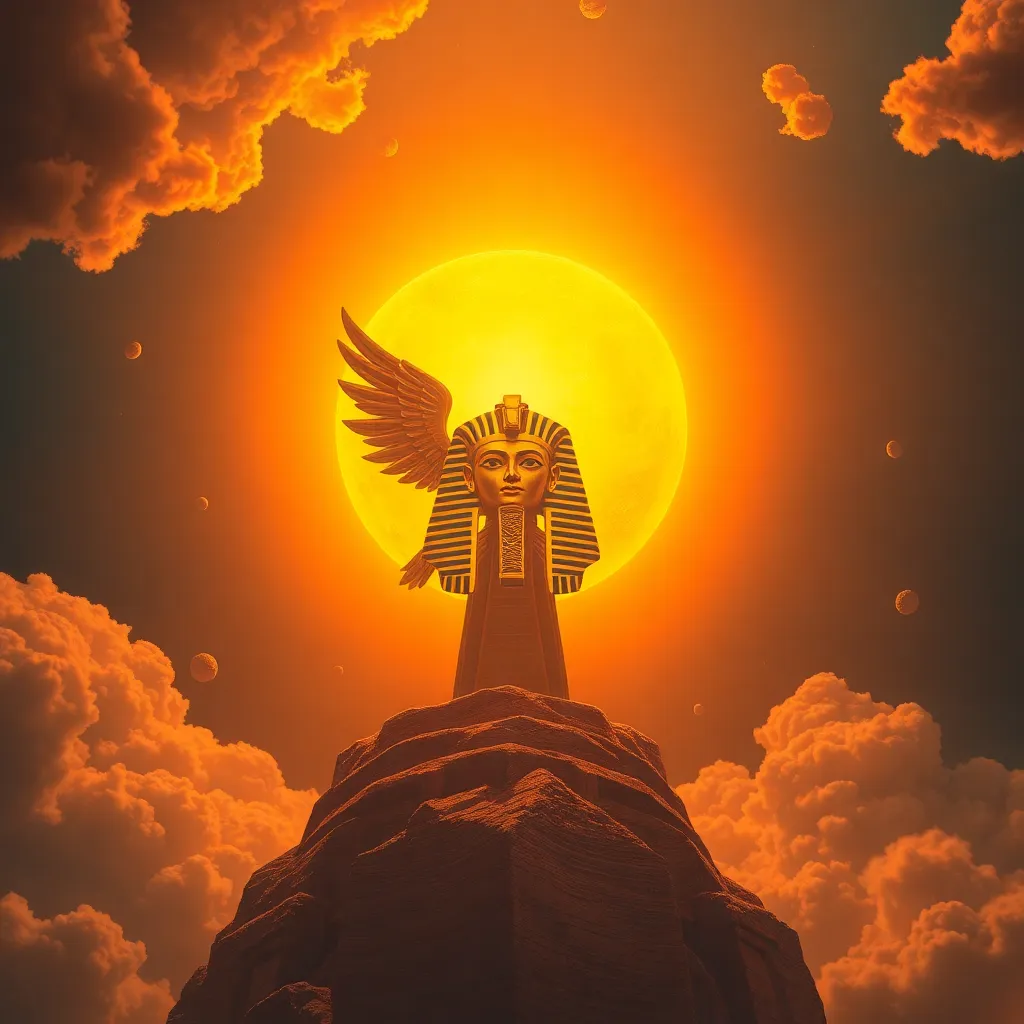The Role of the God Ra: The Sun’s Journey Through the Sky
I. Introduction
In ancient Egyptian mythology, few deities hold as much significance as Ra, the sun god. Ra represents not only the sun itself but also the life-giving force that sustains the world. His prominence in the pantheon reflects the importance of the sun in ancient Egyptian culture, which revolved around agriculture, daily life, and the cycles of nature.
This article aims to explore the multifaceted role of Ra in Egyptian mythology, detailing his origins, daily journey across the sky, religious significance, iconography, relationships with other deities, and his enduring legacy.
II. The Mythological Origins of Ra
Ra’s origins can be traced back to the earliest creation myths of ancient Egypt. According to various myths, he emerged from the primordial chaos known as Nun, embodying the sun’s life-giving energy.
- Creation Myth: In many accounts, Ra is born from the lotus flower that arose from Nun, symbolizing rebirth and the dawn.
- Symbolism: As the embodiment of the sun, Ra symbolizes light, warmth, and growth, crucial elements for sustaining life in Egypt.
III. Ra’s Daily Journey Across the Sky
Ra’s journey across the sky is a central theme in Egyptian cosmology. Each day, he travels from the eastern horizon at dawn to the western horizon at dusk.
- Dawn: Ra is reborn each morning, heralded by the rising sun, bringing light to the world.
- Dusk: As the sun sets, Ra descends into the underworld, where he battles the serpent Apep, representing chaos and darkness.
This cyclical movement of Ra is not merely a physical journey but also a reflection of the solar cycle, which was crucial for agricultural practices in ancient Egypt. The Egyptians believed that the sun’s journey ensured the continuity of life and the balance of the cosmos.
IV. Ra’s Role in Egyptian Religion and Worship
Ra’s significance in ancient Egyptian religion is evident through the numerous temples, rituals, and festivals dedicated to him. The most notable temple was the Temple of Karnak, where he was worshipped as the king of the gods.
- Temples: Temples dedicated to Ra often featured elaborate hieroglyphics and imagery celebrating his power and attributes.
- Festivals: Major festivals, such as the Wepet-Renpet (the opening of the year) and the Feast of the Valley, were held in his honor, emphasizing his importance in the agricultural calendar.
Ra’s influence permeated daily life, with many Egyptians offering prayers and sacrifices to ensure his favor and secure a bountiful harvest.
V. The Iconography of Ra
Ra is depicted in various forms in ancient Egyptian art and sculpture. His iconography communicates his power and attributes effectively.
- Common Representations: Ra is often shown as a falcon-headed man, crowned with a sun disk encircled by a serpent.
- Symbolic Elements: The sun disk represents his divine nature, while the falcon symbolizes his ability to soar above the earth, watching over the world.
This iconography not only reflects Ra’s attributes but also his role as a protector and overseer of the natural order.
VI. Ra and Other Egyptian Deities
Ra’s relationships with other Egyptian deities are complex and multifaceted. He is often associated with gods like Osiris, Isis, and Horus.
- Divine Triad: Ra is central to the divine triad, especially with Horus as his son and Osiris as his counterpart in the afterlife.
- Evolving Role: Over time, Ra’s character evolved, merging with other deities like Amun to become Amun-Ra, symbolizing the unification of different aspects of divinity.
This interconnectedness of gods illustrates the intricate tapestry of Egyptian mythology and the importance of Ra within it.
VII. Ra’s Legacy and Influence
The legacy of Ra extends beyond ancient Egypt, influencing later cultures and religions. His representation as a sun god found parallels in various mythologies around the world.
- Impact on Later Cultures: Ra’s attributes and stories have been adapted and reinterpreted in various cultures, including Greco-Roman traditions.
- Modern Interpretations: Contemporary scholars and enthusiasts continue to explore Ra’s mythology, contributing to a renewed fascination with ancient Egyptian beliefs.
Ra’s role in discussions of ancient Egypt highlights the enduring significance of solar deities and their symbolism in understanding human existence and nature.
VIII. Conclusion
In summary, Ra’s significance in the ancient world cannot be overstated. As the sun god, his daily journey across the sky represents the cycle of life and death, light and darkness, and the balance of nature.
The enduring fascination with Ra and solar deities reflects humanity’s quest for understanding and connection with the natural world. By studying ancient mythologies like that of Ra, we gain insights into the beliefs and values of past civilizations, enriching our understanding of human history.
Ultimately, Ra remains a powerful symbol of light and life, serving as a reminder of the profound impact that ancient mythologies have on our cultural heritage.




